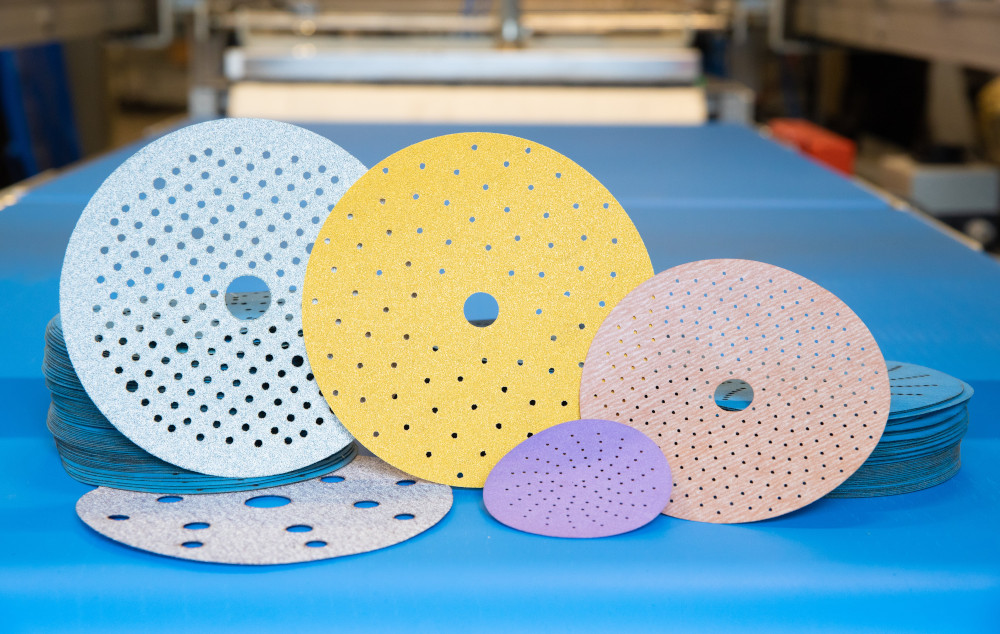MultiCutter MT1500
The ZennaLaser MultiCutter MT1500 is a highly productive laser machine for processing an enormous variety of shapes and hole patterns, including multi-holes. This MultiCutter is engineered to accurately cut shapes in many different materials such as films, textiles, abrasives, or paper.
The MultiCutter is equiped with multiple high power lasers. Two, three or four lasers up to six work parallel, depending on the required output. The laser sources are often placed on a platform above the line, in order to keep the needed floor space limited.
Due to its modular setup, the MultiCutter can be configurated with different unwinders (single, duo, turret), multiple robots for stacking parts and camera systems for high accuracy and quality control. These possibilities ensure a high degree of automation, one of the main drivers for using laser technology.
The MultiCutter MT1500 is based on a material width of 1.500 mm, typical for sandpaper abrasives. But different width lines are also available from 1.000 mm up to 3.000 mm in textile (see Falcon series).
This type of MultiCutter line combines proven technologies of existing Zenna laser lines with latest innovations. One of them is the optional feature "MultiTask", that allows to cut both hole-patterns 'in free' and contours 'supported' in one laser station. MultiTasking (MT) makes a very efficient use of available laser power and enlarges the product portfolio with 'multi-hole' patterns.
